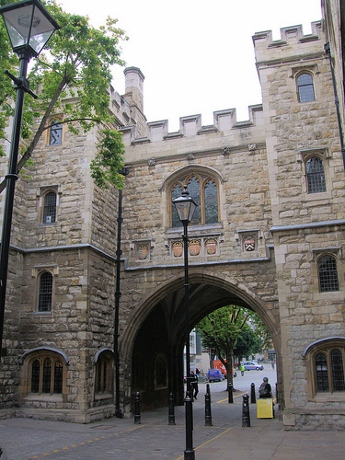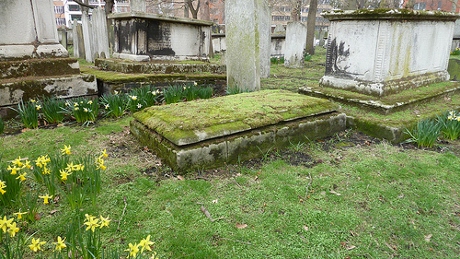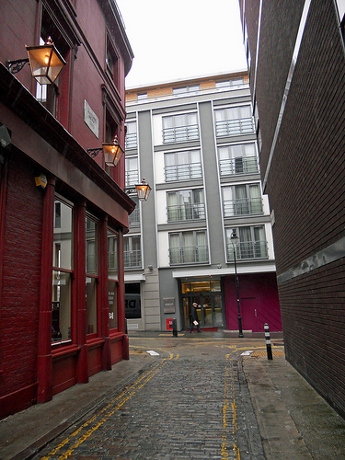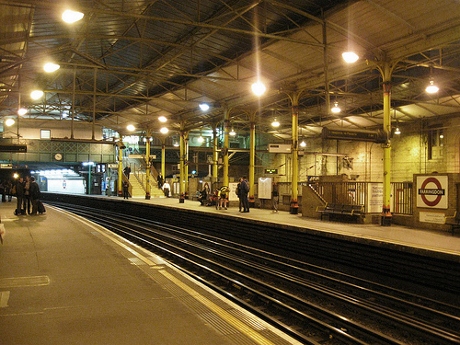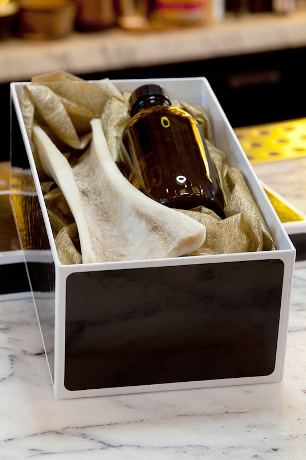London Hotels Insight provides up-to-date, independent advice for your perfect stay in London. We research guest feedback, meet management and identify hotels at the top of their game.
Visit Clerkenwell for a haunting Halloween.
With Halloween fast approaching once more, it’s time for our annual look at London’s spookiest corners and this year I’m thinking of Clerkenwell.
Farringdon is a strange neighbourhood. To the south lies Smithfield Market and Holborn; to the north, Kings Cross; to the east, the City, with its banks and skyscrapers; to the west, the Inns of Court with their medieval courtyards and sedate atmosphere. In between, there’s a little Bermuda triangle where all London’s secrets seem to hide: welcome to Clerkenwell.
There are no great tourist sights in Clerkenwell – no Westminster Abbey, no palaces or great cathedrals. But it’s a fascinating place to wander around, with vestiges of the historic past and some interesting specialist businesses. Antique clocks and watches dispute space with picture framers and bike workshops on the Clerkenwell Road, which also features one of my favourite useful London shops: Clerkenwell Screws (it does what it says on the tin; if you want a fixing you’ll find it here!).
I’ve blogged about Clerkenwell before but this time I’d like to focus on some of the more macabre sights of the area.
For instance, in the atmospheric medieval crypt under the priory church of St John, there is a sculpture out of nightmares – the shrivelling corpse of prior William Weston in his winding sheet. The 15th and 16th centuries loved the ‘memento mori’, the reminder of death – there were memorial brasses showing people in their shrouds and tombs with the living effigy in all its pomp and splendour above and the cadaver below.
Here, if there ever was a ‘living’ effigy, it’s been lost, and the emaciated cadaver is all that’s left.
St James’s church on Clerkenwell Green hides another macabre secret. In the graveyard is the weathered tombstone of Eleanor Steinberg and her four young children, stabbed to death by Ellen’s husband Johann in 1834 before he turned the knife on himself. They are buried here; he was buried in the middle of Ray Street and there are stories that the gravediggers drove a stake through his heart, or smashed in his skull with a shovel. That’s the way they dealt with suicides. If you walk down Ray Street you can wonder just where his body might be, still under the tarmac.
Perhaps the most disgusting part of the story is what happened next. Some bright spark (who would probably win The Apprentice hands down) created a waxwork display in the Steinbergs’ former home and charged people to come and look at the tableau recreating the murder. Vile.
Bleeding Heart Yard is a fairly gruesome name, and it has a wonderfully gruesome legend to go with it. Lady Elizabeth Hatton, the second wife of Sir William Hatton (whose family gave its name to Hatton Garden (not far from here), is said to have been murdered, and her body was found here – torn apart, but with the heart still pumping blood. It’s a myth which comes from the Ingoldsby Legends, immensely popular Victorian ghost stories.
In fact, the name probably comes from the bleeding heart of the Virgin Mary, pierced by swords, which was shown on a medieval pub sign.
You might also want to experience macabre Farringdon through the internet. Colin O’Brien, a local photographer, lived above the junction of Clerkenwell Road and Farringdon Road, and took many photos from his flat of car crashes at the busy crossroads (apparently the traffic lights were unreliable, sometimes showing green on lights in all four directions.) Colin exhibits regularly in London, but the crash photos are on the web on an excellent London blog called Spitalfields Life.
Unless you’re staying in one of the nearby hotels in Kings Cross, you’ll want to use Farringdon Station to come back home.
But there’s a screaming ghost there – another denizen of the area’s dark side, 13-year old Anne Naylor, a hatmaker’s apprentice murdered by her mistress in 1758. While most apprentices were looked after and learned a useful trade, some were badly abused; Anne Naylor was hired from a workhouse, with no family to look after her interests, and this gave hat maker Sarah Metyard the opportunity to torment the girl. After Anne tried to escape, she was beaten, tied up and starved, and eventually expired. Sarah tried to get rid of the body in the sewer at Chick Lane – roughly where Smithfield Market now stands.
Metyard’s daughter grassed on her in the end – Metyard was convicted ten years after the murder, and ended up as an anatomical display in Surgeons’ Hall, dissected in front of students. As for the daughter, she got no benefit from squealing – she was apparently put to death too. But even though justice was eventually and rather slowly done, Anne Naylor’s ghosts is still said to haunt Farringdon station, screaming and squalling.
If you want something really spooky to do on Halloween, then I’d recommend a tour of London’s most beautiful cemeteries. Perhaps followed by a night at The Langham where apparently Room 333 is haunted (the historic London hotel was bombed in the 2nd World War and it is rumoured that the ghost of a German soldier roams its hallways).
Check the best rate for the Langham Hotel from 30+ hotel booking sites
To get you further in the mood, the same hotel is even laying on a special “Box o Bones”cocktail which is presented in a small antique box and poured over a piece of bone marrow (as pictured above). Drink it if you dare just before you retire for the night in the hotel’s haunted room…
Get the best London hotel deal from 30+ trusted booking sites (1 click)
Photo credits: Jim Linwood, mertxe iturrioz, Duncan~, nicksarebi, The Langham London.
Previous post: Authentic Portuguese dinner at Pestana Chelsea.
Next post: Moreno at The Baglioni: a tasting.


